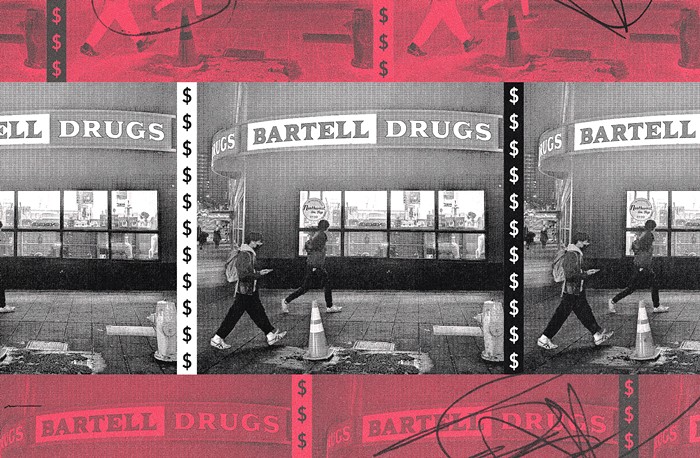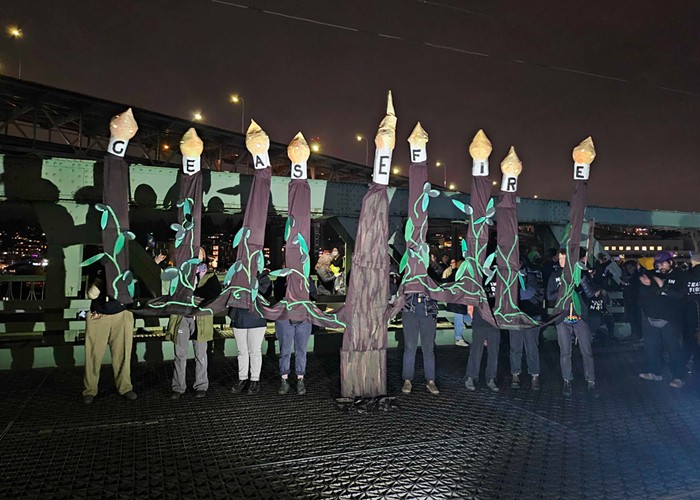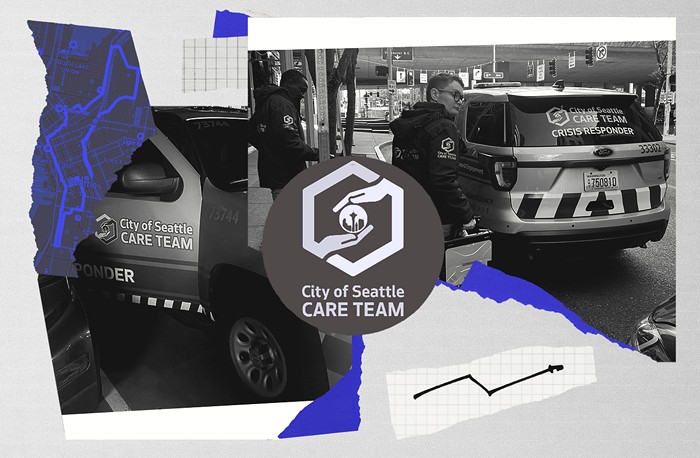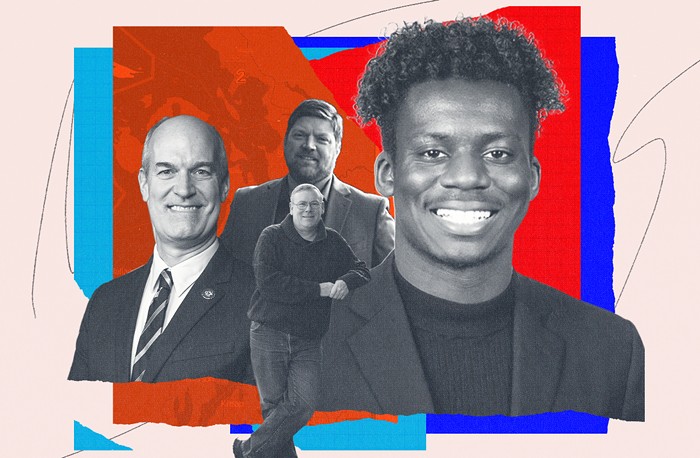
I took the above photo yesterday morning at First AME Church. Compare it to the one below, which I took on April 30, 2014 at Powell Barnett Park.

Both images are of press conferences held by Reverend Harriet Walden and the Seattle Police Department decrying a summer outbreak of youth violence in Seattle. At both events, in both years, the same talking points were repeated. Police said they would work hard to catch criminals. Walden and other community elders said there were too many guns on the street. They called for cameras in areas where violence has erupted—an idea that has failed to gain traction because of privacy concerns.
"This same talk we're having right now, we had last summer," said Ardell Shaw, a member of the Black Prisoners Caucus and former prison inmate turned community organizer. "We've been doing this for a long, long time," Walden admitted.
Nothing much has changed.
So far this year, the SPD says it has confiscated more than 400 guns off the street. But that hasn't prevented 204 shots from being fired—an increase over last year. Yesterday afternoon, the department released images of two shooting suspects, one of them firing a Luger pistol believed to have been used in 10 Seattle shootings over the last two years.
In 2014, there were a string of murders of young black men in April. In 2015, over the past few weeks, there have been gun fights and shootouts in Rainier Valley, Beacon Hill, and the Central District. On July 2, 30-year-old Torrence Phillips was gunned down at the intersection of 23rd Avenue and Spring Street.
I had one question for Mayor Ed Murray. Will he expand funding for the Seattle Youth Violence Prevention Initiative and Career Bridge? (The city council is going to take up the mayor's budget proposals—which Murray hasn't unveiled yet—by early fall.)
Career Bridge grew out of and works closely with the Black Prisoners Caucus, a group of current and ex-prisoners in Washington State. The program provides wraparound social services to people of color facing barriers to employment, particularly ex-cons. The Seattle Youth Violence Prevention Initiative does exactly what's in its name, focusing on preventing violence among youth ages 12-17.
"Better policing is part of the answer," the mayor said in a speech at the church. "But that's not going to be good enough. We also have to address the underlying causes."
Police chief Kathleen O'Toole emphasized, as she often does, that "prevention and intervention" are just as important, if not more important, than old-fashioned law enforcement.
In the last city budget, Career Bridge was funded to the tune of $400,000 annually. That's about how much the city spends on four Seattle police officer salaries, excluding overtime, put together. In the previous budget cycle, the city council reduced by half Career Bridge's funding from what then-Mayor McGinn had requested. Council Member Tim Burgess said the program needed to be re-developed to "pass muster."
The annual, city-funded budget for the Seattle Youth Violence Prevention Initiative (SYVPI) comes in at $5.7 million.
The Seattle Police Department's annual budget is $300 million. Murray wants to add 75 officers to the force over the next three years.
I'd say the balance of funding right now is stacked rather heavily on the law enforcement side, rather than the prevention side.
Murray suggested he's not certain that Career Bridge and SYVPI are good investments. "We need to make sure we're getting what we want out of our investments," Murray said. "Is this the best place to put the money?"
A city audit (PDF) showed that Career Bridge produces "strong employment outcomes," and indicated it suffers from understaffing (probably as a result of underfunding). The program has graduated 160 men since 2013, placing 80 percent of them in jobs.
So, I asked the mayor, why not double the program's funding?
"If you want to do your gotcha question, do your gotcha question," Murray responded.
I caught up with Shaw, a former inmate turned community organizer, afterwards. Shaw is an administrative assistant at Career Bridge. "He knows it's working," Shaw said of the mayor. "They understand it's working, but for some reason the money's not being put where it needs to be put. If I knew that answer, hey—" He shrugged his shoulders.
Career Bridge will ask the city to double its funding in the upcoming budget, said Pamela Banks, the CEO of the Urban League, who's been deeply involved in the program. "Tell 'em we comin' at 'em," she said, flashing a grin.
UPDATE: Viet Shelton, a spokesperson for the mayor's office, says I should have mentioned that Murray has doubled the size of the Youth Employment Initiative, which will offer jobs to 2000 young people. "And we’re pushing on Priority Hire stuff to hire and provide apprenticeships for young people interested in working the Trades," he says. "For the seawall project, nearly half of all hours worked are by folks from neighborhoods like Rainier Beach, Northgate and Delridge. We’ve boosted significantly the number of apprenticeship hours performed by workers from these and similar neighborhoods with a large proportion of these hours performed by persons of color."
Meanwhile, here's how Amir Islam, a founder of Seattle's United Hood Movement, reacted to the call for more cameras yesterday:
Puttingup cameras 2catchmore "criminals"didnt @POTUS saycollege wouldB#Free99 if westop spending $80Billion ayear on massincarceration #FOH
— Amir Islam (@AmirIslamsworld) July 17, 2015
This post has been updated.


















